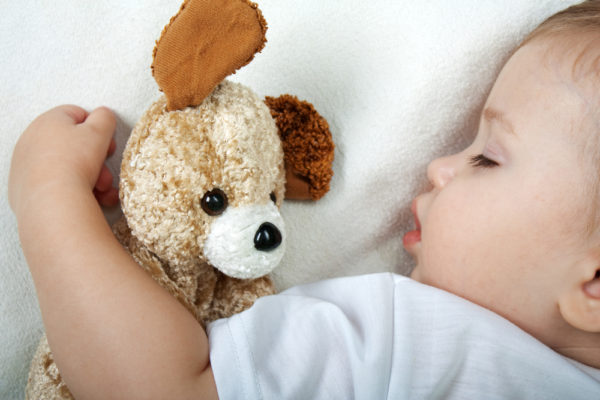What’s a lovey?
A lovey is an attachment object that your child can sleep with that provides comfort and reassurance throughout the night. Babies, toddlers, preschoolers (and even older kids) can benefit from sleeping with a lovey, which can have an almost magical power to calm and soothe. Loveys aren’t a must for every child – lots of children can relax and soothe themselves to sleep without one – but for some children, especially those that have a hard time separating from their caregivers, a lovey can help to ease that transition when it’s time to say goodnight.
What makes a good lovey?
Almost anything safe can make a good lovey. Small, soft items work well if there aren’t any buttons, bows, or snaps that might detach and pose a choking risk. Breathable fabrics are a good choice, especially for younger children, and, of course, loveys must be washable AND replaceable. Be sure to buy duplicates so that you have a replacement if your child’s lovey goes missing or wears out (children often won’t accept a substitute that’s less than a perfect match). Your best bet is to offer a lovey that your child uses only for sleeping. That way, it can stay in the crib or bed, and you’ll know exactly where it is at all times.
Although many children tend to gravitate towards soft, snugly materials, loveys can also take less conventional forms. I’ve seen children choose some pretty unusual sleeping buddies over the years, including a little boy who insisted on sleeping with an extra television remote tucked under his arm (minus the batteries, of course!). Try to go with the flow if your child attaches to something unusual or wants to switch out loveys from night to night. A lovey can be anything as long as it’s safe and brings comfort to your child.
When is the best time to start encouraging a lovey?
To maximize safety, the AAP recommends that all babies sleep in an empty crib for the first year of life – that means no toys, blankets, stuffed animals, or other lovey-like items in the crib. (The exception is a pacifier, which the AAP recommends eliminating by 6 months of age). If you’re tempted to bend the rules a bit, be sure to check with your pediatrician first. Depending on your child’s health, strength, and motor skill development, some pediatricians may give you the green light to allow your child to sleep with a small lovey before the age of one.
How to introduce your child to a lovey.
Some children choose their own lovey without parents doing a thing. They zero in on a particular object and fall madly and hopelessly in love. Others will develop an interest in a lovey over time. To encourage the connection, choose an item that your child is interested in and spend a few weeks creating opportunities for them to interact with it frequently throughout the day. Tuck it under their arm while they’re nursing or drinking their bottle. Place it in the stroller or car seat when you’re zipping around town. Be sure to include the lovey in your child’s bedtime routine and, of course, make sure they have it when they go to sleep at night. After a few weeks, there’s a good chance the bond will be cemented, and you can leave it in the crib full time.



























